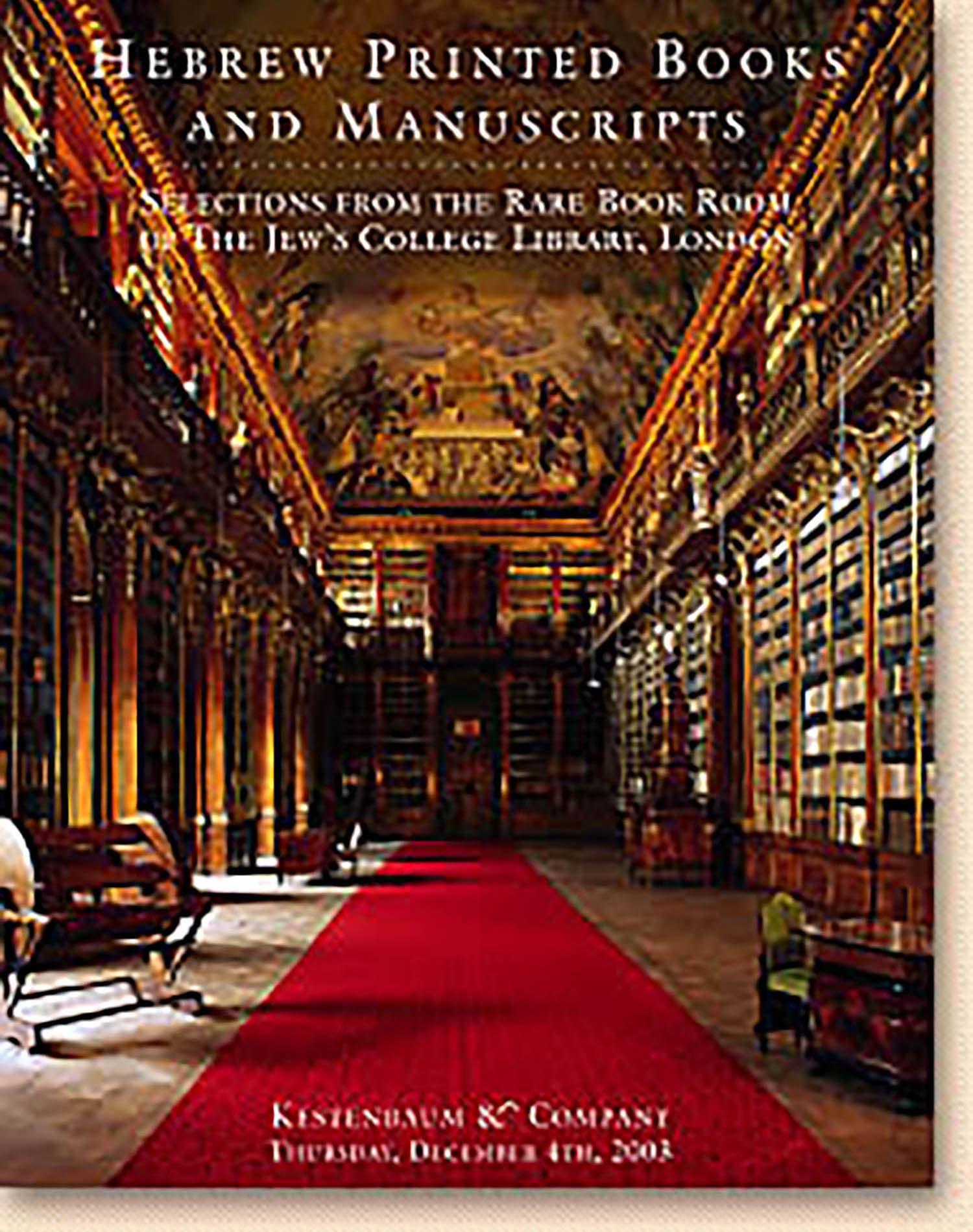(Traditionally attributed to). Zohar Chadash u-Midrash Hane’elam [kabbalah]. Includes glosses of R. Isaac Luria that had been in the possession of R. Menahem di Lonzano

AUCTION 21 |
Thursday, December 04th,
2003 at 1:00
Kestenbaum & Company Holds Inaugural Auction of Hebrew Printed Books & Manuscripts at Their New Galleries
Lot 235
SHIMON B”R YOCHAI.
(Traditionally attributed to). Zohar Chadash u-Midrash Hane’elam [kabbalah]. Includes glosses of R. Isaac Luria that had been in the possession of R. Menahem di Lonzano
Venice: Bragadin 1658
Est: $1,000 - $1,500
The compiler of the Zohar Chadash was Abraham Halevi Beruchim, a disciple of Moses Cordovero and Isaac Luria.
This edition was brought out by Joseph Hamiz and proofed by the preeminent Italian kabbalist R. Moses Zacuto.
The physician Joseph Hamiz had been an outstanding disciple of the rationalist and foe of kabbalah Leone Modena. Modena was aghast when his erstwhile disciple embraced the study of kabbalah. Hamiz was drawn to kabbalah by the influence of R. Aaron Berechyah Modena (author of Ma’avar Yabok), a disciple of R. Israel Sarug. See Nehemiah S. Libawitsch, Extant Fragments from the Writings of the Philosopher, Physician, and Kabbalist Joseph Hamiz (Jerusalem, 1938); Gershom Scholem, Sabbatai Sevi (Princeton, 1989), p. 744; EJ, Vol. 7, cols. 1239-1240.
Although the colophon “Tihyeh” would indicate the date of publication is 1663, Scholem argues that since the Second Part (on the three scrolls of Song of Songs, Ruth and Lamentations) is clearly dated “Notzer Hesed” (1658), the earlier part must also be from that year and not 1663. Scholem, Bibliographia Kabbalistica, p. 175, no. 3.
Hamiz and Zacuto also collaborated on glosses on the Zohar entitled Derekh Emeth (Venice, 1658). Hamiz’s commentary on the Zohar, Yod’ei Binah (also a collaborative effort of Hamiz and Zacuto) was preserved in manuscript. See G. Scholem, Kitvei Yad be-Kabbalah (Jerusalem, 1930), p. 151. R. Hayim Joseph David Azulai writes that he saw one copy of Yod’ei Binah in which the beginning and end were manuscript, while the middle portion consisted of about 100 printed leaves. Azulai, Shem ha-Gedolim II, s.v. Yod’ei Binah. This printed edition of Yod’ei Binah was presumed lost until Gershom Scholem discovered a copy in London. He writes:
“I was fortunate enough to discover a copy of the printed work in the library of the London Beth Din (formerly the library of Jews College, as the original collection of R. Solomon Hirschel of London came to be called later). This unfortunately incomplete copy (title page + fols. 144) also contains the part of the commentary composed by Hamis. It is possible that no more was printed and the volume was never finished” (Scholem, Sabbatai Sevi, p. 744, n. 154).
In his book Paths of Faith and Heresy (Jerusalem, 1994), Prof. Isaiah Tishby makes the assertion that Joseph Hamiz, whose whereabouts are unknown after 1658, settled on the Ionian island of Zante (then under the Venetian Republic) and became a key figure in the Sabbatian underground. Supposedly, the incriminating piece of evidence is Oxford ms. 2239. On pp. 66-67 Tishby published face-`a-face an authentic autograph of Joseph Hamiz and the Oxford ms. whose contents are riveted with Sabbatian elements. Tishby writes: “The handwriting is so distinctive, that at first glance the similarity is noted” (p. 65). Of course, anyone who glances a second time will observe that there are crucial differences betwen the two specimens of handwriting, most notably the final letter of the Hebrew alphabet, tav. Hamiz’s tav consists of a long tail and resembles a final nun, whereas in the Oxford ms. the tav is the conventional type.
